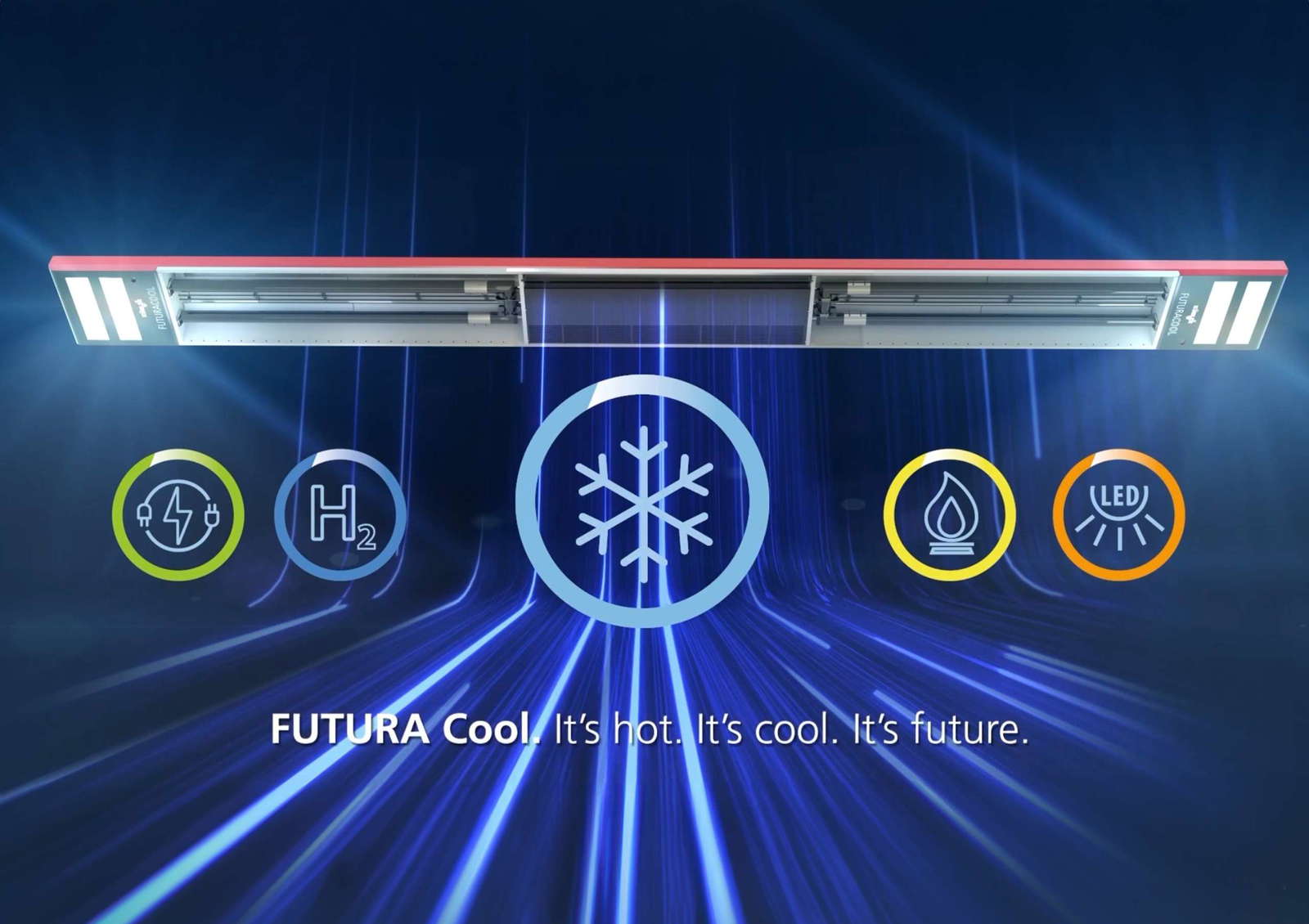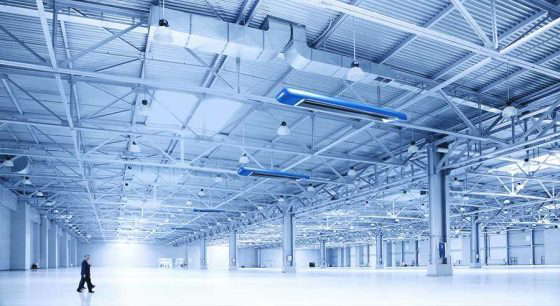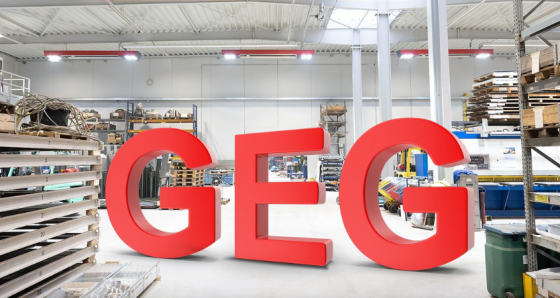On the way to climate neutrality - what you should know about the hall heating of the future

Stopping climate change - how climate-neutral heating is the first step in the right direction
Hardly anyone doubts that something has to happen to get man-made climate change under control. The ambitious goal in the amended Climate Protection Act is therefore: Germany wants to achieve climate neutrality not by 2050, but by 2045. This means that all greenhouse gas (GHG) emissions from electricity generation and industry to buildings, transport and agriculture are to be reduced as much as possible. Unavoidable emissions are to be offset by greenhouse gas sinks. In order to achieve this, the Climate Protection Act sets a concrete interim target for GHG emission reductions by 2030, namely by at least 65 % compared to 1990. The target is therefore clear. It is also clear that an important step here is to switch to climate-neutral heating with hydrogen or other alternatives in the long term.
Finally more clarity on the path to climate neutrality
The path to climate neutrality raises a lot of questions and causes a great deal of uncertainty. Especially for those who have to make decisions about investments that reach far into the future. One example of such investments are industrially used Hall heating systems with a life cycle of 15 years or more. Anyone considering such a purchase today should definitely look into heating systems that provide climate-neutral heating. But what exactly is behind climate-neutral heating and the goal of climate neutrality?
The report published on October 11, 2021 by the Kopernikus project Ariadne1) could provide clarity here. This is a study by more than 50 researchers from 10 institutes who have examined and evaluated various transformation scenarios for climate neutrality. This is the first comprehensive and detailed model comparison with robust findings on transformation paths, scope and bottlenecks. The following key insights can be derived across all scenarios and models:
- The central energy sources in a climate-neutral energy system are mainly renewable electricity, green hydrogen and green e-fuels as well as sustainably produced biomass.
- An increasingly renewable electricity supply is the main pillar of the further decarbonization of the energy system.
- In the target scenarios, the increase in energy efficiency alone will lead to a reduction in final energy consumption of 34 - 59 % by 2045 compared to 2019.
And it is also clear, according to the last point: the climate protection targets for 2030 and 2045 are extremely challenging and can only be achieved with massive investment, additional political measures and infrastructure development in all sectors.
1) Source: Germany on the road to climate neutrality in 2045: Scenarios and pathways in a model comparison. https://ariadneprojekt.de/publikation/deutschland-auf-dem-weg-zur-klimaneutralitat-2045-szenarienreport/
The most important facts about climate-neutral heating from the coalition agreement of the traffic light coalition
The coalition agreement of the traffic light coalition entitled "Daring more progress" has now been on the table for a short time. Despite a constructive spirit for the future, it still contains a lot of uncertainties, according to the DIHK in its first preliminary overall assessment2). Nevertheless, it is now becoming clearer how the path to climate neutrality can be shaped. The key statements in the coalition agreement are particularly relevant for investments in energy-intensive technologies such as hall heating systems. We have summarized them for you with reference to page and paragraph of the coalition agreement:
P. 27 - Chapter "Economy" Keyword "Industry"
- We are committed to the establishment of a European Union for green hydrogen.
- To this end, we want to provide financial support for investments in the development of a hydrogen network infrastructure.
- We want to become the lead market for hydrogen technologies by 2030.
- for an initiative to establish an international climate club open to all states with a uniform CO2-minimum price and a common CO2-Border adjustment.
p. 59f - Chapter "Climate, energy, transformation" Keyword: "Gas and hydrogen"
- An energy infrastructure for renewable electricity and hydrogen is a prerequisite for Europe's ability to act and remain competitive in the 21st century.
- We are accelerating the massive expansion of renewable energies and the construction of modern gas-fired power plants in order to meet the rising demand for electricity and energy over the coming years at competitive prices.
- The gas-fired power plants that will be needed to ensure security of supply from renewable energies must be built in such a way that they can be converted to climate-neutral gases (H2-ready).
- Natural gas is indispensable for a transitional period.
- We want to drive forward the development of an efficient hydrogen economy and the necessary import and transport infrastructure as quickly as possible.
p. 60 - Chapter "Climate, energy, transformation" Keyword: "Grids"
- Electricity and hydrogen grids are the backbone of the energy system of the future
P. 90 - Chapter "Building and housing" Keyword: "Climate protection in the building sector"
- amend the Building Energy Act (GEG) as follows: By January 1, 2025, every newly installed heating system is to be operated on the basis of 65 percent renewable energy3).
- In the GEG, the new construction standards will be aligned with KfW-EH 40 as of January 1, 2025.
- In addition, measures equivalent to the GHG emission reduction target can be used under the innovation clause.
- We focus on tailor-made and technology-agnostic measures
We will continue to develop and restructure the funding programs in line with the objectives and requirements.
Coalition agreement in the federal government 2021. First, preliminary overall assessment © Deutscher Industrie- und Handelskammertag e.V. (DIHK) | Berlin | Brussels, as at: November 2021
Decentrally heated halls (zones) with room heights > 4 m are exempt from the obligation to use renewable energies to cover heating and cooling energy requirements (GEG).
In summary, for climate-neutral heating this means that...
... green electricity and green gas (hydrogen) are the energy sources on the road to climate neutrality. The importance of natural gas as a bridging technology is confirmed - the fossil fuel with the lowest carbon footprint will continue to be used as a transitional solution until we can heat completely climate-neutrally with hydrogen. And this is also emphasized: In addition to renewable energies, equivalent measures that follow the goal of reducing GHG emissions, such as increasing energy efficiency, are recognized, which benefits our decentralized gas-powered hall heating systems and makes them an option for climate-neutral heating
Highly efficient and flexible: decentralized gas-powered hall heating systems flank the path to climate-neutral heating
These statements make it clear that natural gas-powered decentralized infrared hall heating systems will remain the golden standard in hall heating in the long term. There are good reasons for this, as the heating systems specially developed for the physical conditions of hall buildings are clearly superior to most technical alternatives in terms of energy efficiency and cost-effectiveness for room heights > 4 meters. Due to their high energy yield and very low peripheral losses, infrared heating technologies of the dark radiator type such as those from KÜBLER achieve energy savings of between 30 and 70 percent. They can already meet the requirements of the 2030 climate targets - so this is not completely climate-neutral heating, but it is much more environmentally friendly compared to the alternatives, as the energy efficiency is particularly high. Added to this are the relatively low investment costs. Incidentally, the Ludwigshafen-based hall heating specialist's high-efficiency technologies can already be operated with biogas4) and are H2-ready. This means that as soon as you have hydrogen available, you can easily mix it with a reliable proportion of 20 vol.-% (and increasingly more), bringing you closer to climate-neutral heating step by step.
Hall heaters of the dark radiator type also impress with their flexibility when it comes to Heating of production, storage and other hall buildings. The decentralized gas-powered solutions have extremely short heat-up and switch-off times compared to hot water-based technologies. This means that your hall heating system can react immediately to additional shifts or changes in the outside temperature - so you don't have to chase yesterday's weather, which is also the right step towards climate-neutral heating. Because the appliances only require a small amount of space under the ceiling, there is plenty of room for them to be used. And unlike with underfloor heating, your hall floor also gives you full flexibility, e.g. for changes to the machine layout.
Climate-neutral heating with KÜBLER - what the hall heating of the future looks like
The energy sources of the future are renewable electricity and green hydrogen. What does this mean for climate-neutral heating in industry? KÜBLER, the innovation leader for energy-saving hall heating systems, sees two main options here:
- Due to its high efficiency and the still volatile availability of renewable energy sources, the hall heating of the future will continue to be based on natural gas or liquid gas in the long term.
- An increasing proportion of green gases will be added to fossil gases - until the technical challenges of producing and distributing hydrogen are solved and the systems are operated 100 % with hydrogen.
When exactly this will be remains to be seen. What is clear, however, is that both industry and the private sector will have to switch to climate-neutral heating with green hydrogen in order to achieve complete climate neutrality. Until then, we will have to rely on heating systems with high energy efficiency and gradually prepare the fossil gases used for this purpose until we can switch completely to the use of hydrogen.
-
If you are reading this article, you are probably looking for an efficient way to heat your industrial or commercial building. During your research, you have already come across one or other technology such as dark radiant heaters or hot air. Now you want to know why dark radiant heaters in particular are repeatedly highlighted as especially efficient. We'll tell you!
-
How will Germany heat from 2024 according to Federal Minister Habeck? First things first: the final answer is not yet available. This is because the draft for a new Building Energy Act (GEG) has only just made it through the cabinet. The next step will be to ask the Bundestag and Bundesrat. Nevertheless, the announced "end" for gas and oil heating systems has been making waves for months. And caused so much uncertainty that last winter, instead of investing in the energy-efficient refurbishment of their hall heating systems, industry often preferred to reactivate old oil and coal heating systems...
-
Not only politicians have pulled the ripcord, many companies are also planning to extend the Christmas break and shut down operations at least until the second week of January. Machines will be at a standstill for weeks and the doors to the factory buildings will remain closed.
-
Operators of indoor heating systems are also responsible for having their system serviced regularly. In addition to operational safety, there are other good reasons why maintenance should not be put on the back burner!







